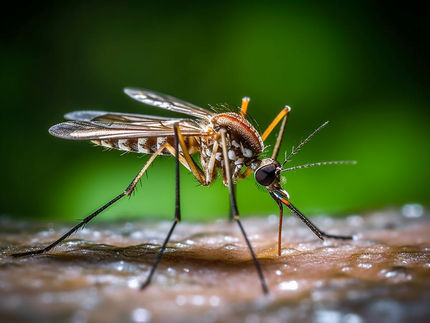Oropouche-Virus: New risk for Europe?
Five mosquito species under scrutiny
Advertisement
Researchers at the Bernhard Nocht Institute for Tropical Medicine (BNITM) have teamed up with colleagues from the University of Hamburg and other institutions to investigate for the first time the risk of transmission of the tropical Oropouche virus (OROV) by mosquito species common in Europe. The results show that under certain climatic conditions, the invasive Asian tiger mosquito (Aedes albopictus) can transmit the virus – posing a potential risk for southern Europe.
The Oropouche virus belongs to the arbovirus family, which are viruses transmitted by blood-sucking arthropods (arthropods). Until now, only midges were known to be carriers (vectors) of OROV; the role of mosquitoes was unclear. Since the beginning of 2024, there has been a massive increase in OROV infections in several countries in Central and South America. The Pan American Health Organisation (PAHO/WHO) recorded over 11,000 confirmed cases by the end of the year – including, for the first time, deaths and evidence of possible transmission during pregnancy with serious consequences such as miscarriages and microcephaly (small head circumference). In view of this development, the World Health Organisation (WHO) classified the risk in the affected area as high. In Europe, individual imported cases have already been detected in travellers returning from abroad. Until now, it was unclear whether mosquitoes were even capable of transmitting the Oropouche virus, i.e. whether they possessed vector competence for this arbovirus – a key question for risk assessment.
Five mosquito species under scrutiny
The study, which has now been published, provides initial answers and a risk assessment for Europe: The team examined five mosquito species common on the European continent in the laboratory, including native species (Culex pipiens biotype pipiens and C. torrentium) and invasive species such as Aedes aegypti, A. japonicus and A. albopictus. The animals were infected with Oropouche viruses and kept at different temperatures. The researchers analysed whether the mosquitoes could actually be infected with OROV (a prerequisite for transmission to humans) and whether transmission could occur through saliva. The results show that only Aedes albopictus exhibited low vector competence for OROV at temperatures of 24 to 27°C. At lower temperatures and in the other mosquito species tested, no virus transmission was detected.
Only one species showed transmission – in warm conditions
To assess the epidemiological relevance of this observation, the researchers combined their laboratory data with climate data and current distribution maps of Aedes albopictus. The analysis shows that regions around the Mediterranean in particular have climatic conditions that could favour seasonal virus transmission in summer. Areas in Spain, southern Italy, Greece and Turkey – regions where Aedes albopictus is already established – would be particularly affected.


























































